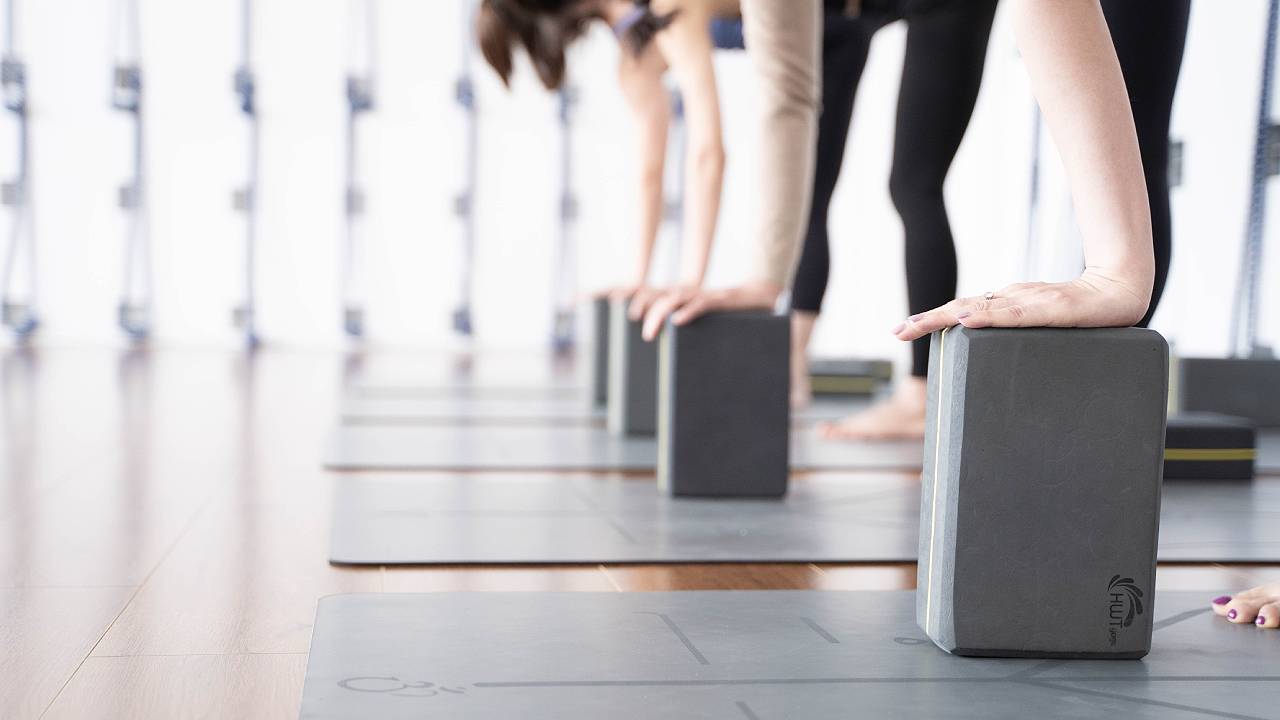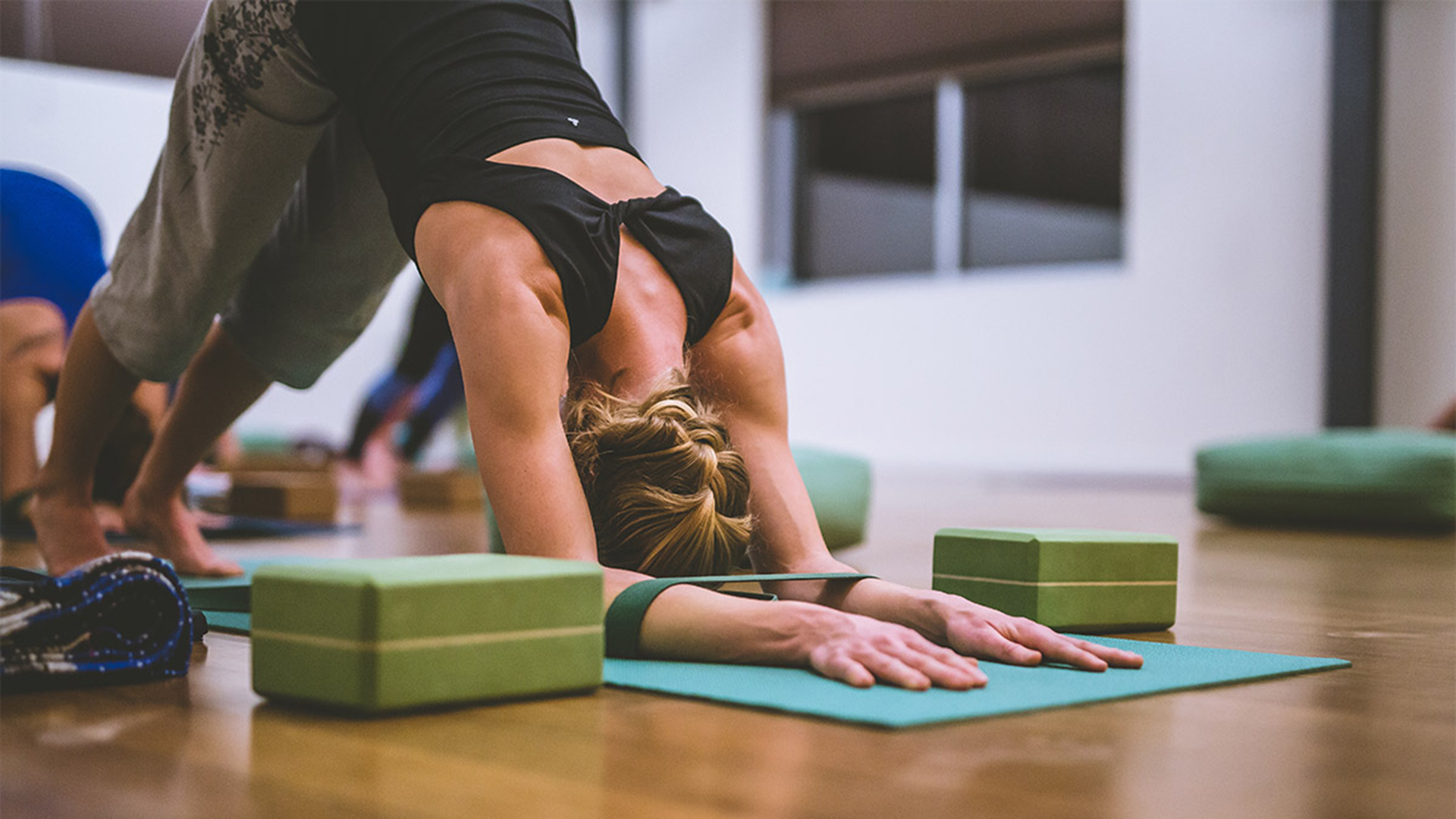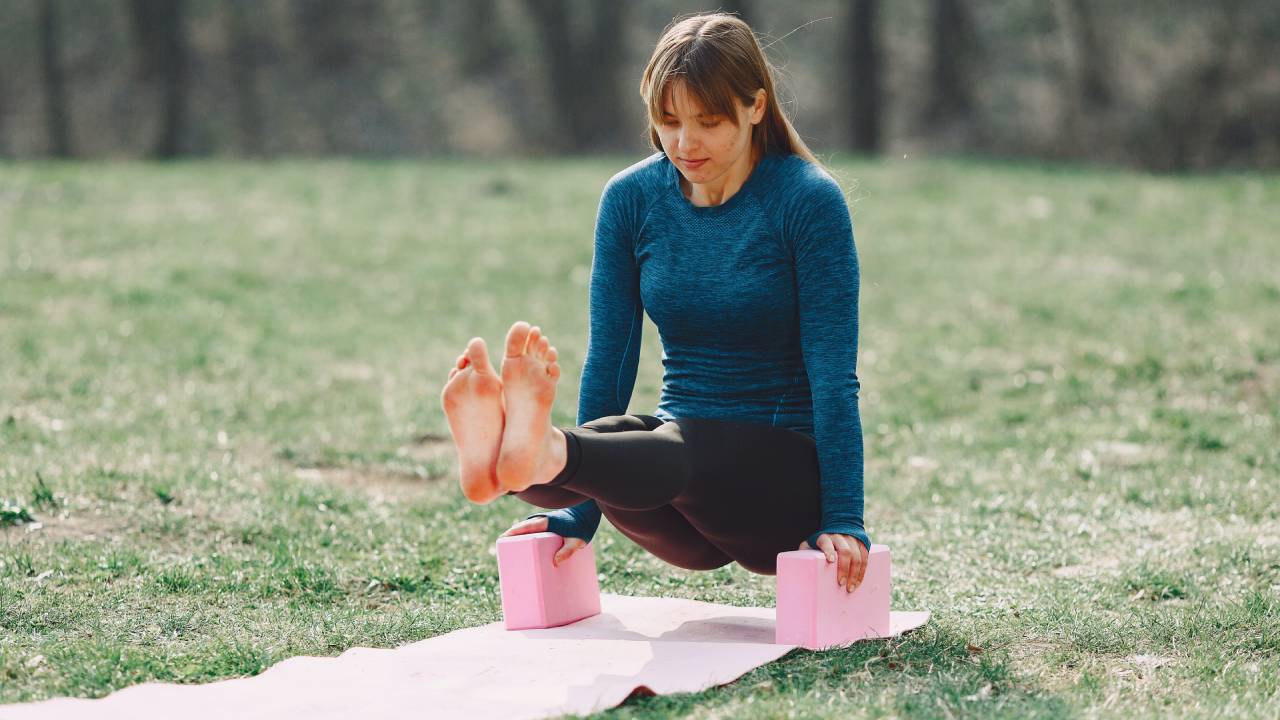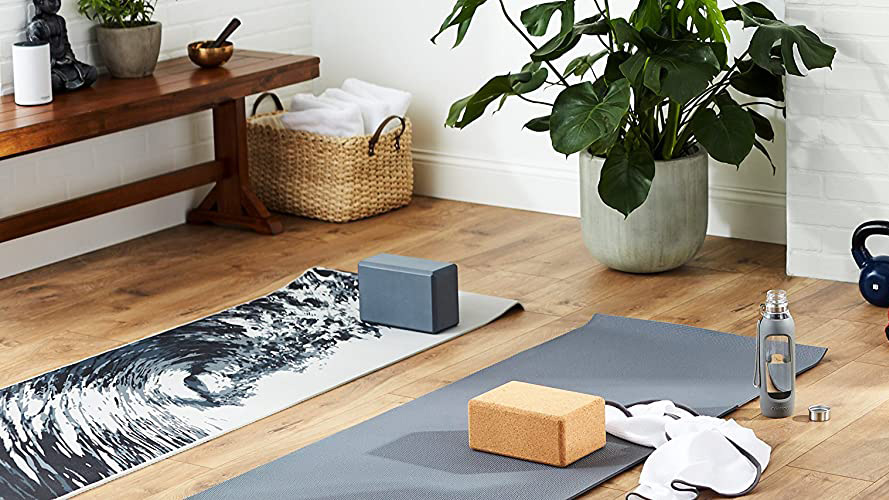
If you're new to the world of yoga, there are many pieces of yoga equipment that you can use to challenge your practice, deepen your stretches and make poses easier for yourself. The best yoga blocks do all of this for you, but how do you use them?
In this guide, I take you through how to choose and how to use a yoga block, plus the best poses to do with a yoga block.
- Find the best yoga mat for your practice and flow
- Move, stretch and pose in style with the best yoga pants
How to choose a yoga block
There are various types of yoga blocks you can purchase. They vary in size and material so it’s important to know the differences and what this means for your yoga practice. One thing to be aware of is the distinction between a yoga brick and a yoga block. A yoga block tends to be thinner and wider compared to a yoga brick which, as the name suggests, is shaped more like a brick.
When it comes to choosing the right block for you, consider the material it's made out of. There are cork, foam and more recently bamboo blocks available. The foam blocks come in two versions; one is firm and the other is more malleable. Cork and bamboo bricks are solid, and do not have any give. Yoga blocks tend to be made out of foam and cork while bricks can be either foam, cork or bamboo.
The material, and whether it’s a yoga block or brick, influences what you can use it for in your practice.
How to use a yoga block
Yoga blocks can be used throughout your yoga practice in numerous, and inventive, ways. They can help make postures more comfortable and give extra support. You can also use them to open up areas of the body you wouldn’t be able to without them. They can offer stability in standing postures by helping to bring the floor closer to you if you find it hard to reach the floor. They are also great for creative yoga sequences and building strength. The list really is endless. But their main aim is to offer extra support for your practice and to help you access parts of your body that may not otherwise have been opened, without that extra support.
The way yoga blocks are used can look different for each person. My advice is to get creative! Struggling with a yoga posture? Grab a block and see if it can help in any way. They have three orientations so sometimes you’ll want the widest surface area and at other times, the smaller area will work perfectly. You can rotate the blocks to give you the height you need if you’re using them to bring the floor closer to you in standing postures. Explore with trial and error and have fun doing so.
Sign up to the T3 newsletter for smarter living straight to your inbox
Get all the latest news, reviews, deals and buying guides on gorgeous tech, home and active products from the T3 experts
Let’s go back to the materials for a second. The material and style of the block will influence what it is best used for in your practice. As a general rule, the softer foam yoga blocks are good for seated postures where you need a little extra height, for example, in a crossed legged position if you find your knees are high. Sitting on a soft foam yoga block (or two) can help relax the muscles around the hips, helping to lower the knees. This makes the posture more comfortable for you to hold and instead of creating tension, it helps to release it.

Harder foam blocks (remembering these are wider and thinner than the bricks) can be used for extra height in seated or standing postures. You can sit on these and they offer a much firmer support under the buttocks, which can be useful compared to the softer foam yoga blocks that mold to your body. It’s personal preference which one you use for seated postures but for those who have a natural tendency for the pelvis to tip back in forward bends, sitting on a yoga block can help make forward bends more accessible.
The harder foam blocks can be used in standing postures to help bring the floor closer to you, for example, in a standing forward bend. You can place a block under each hand so you’re able to connect your fingers with something, rather than having your hands dangling. It also means you can work on straightening the legs, adding an extra layer and challenge to the posture you may otherwise have missed. This is how yoga blocks offer extra support while allowing you to access parts of your body that may have been ignored. Without the blocks, perhaps you would have kept your knees bent. With them, you have space to explore straightening the legs without straining to reach the floor.
Another way to use the harder foam blocks is in Warrior 1. If you find your back heel in Warrior 1 doesn’t reach the floor, try placing a harder foam block underneath your heel and use that to press your heel back and down into. This gives stability to your standing posture but also helps to strengthen the back leg.
Traditionally, the foam, cork and bamboo yoga bricks are used for standing postures where your body is required to place weight into the hands on the bricks. Their brick-like shape and sturdiness means they can hold your weight without wobbling. In a half-moon pose, you can use a yoga brick under your hand, bringing the floor closer to you. You can place your palm onto the brick firmly and safely while you lean the weight forward and lift the back leg into the balance. These bricks need to be strong and secure to hold you in these postures. The thinner blocks are prone to wobble when placed on any side other than the widest surface area so they don’t tend to be used so much for weight-bearing standing postures.

What postures work with a yoga block?
I’ve given examples above of where yoga blocks and bricks may be useful. But as I said, feel free to explore and find what works for you and what doesn’t. The key thing to remember is that anything where you are balancing or weight-bearing, yoga bricks are generally better. Anything that is for added support, blocks will suffice.
Here are a few yoga postures that can benefit from a yoga block or brick, especially if you are finding you’re stuck in that posture. You can’t go any deeper, or you can’t reach the floor, or don’t seem to be feeling the stretch properly. Give these a go with your yoga block and see how they feel!
Triangle pose
Commonly, people strain to touch the floor in a triangle pose. This stops them from being able to open the inside and backs of the legs sufficiently, it collapses their chest towards the floor so they lose the side stretch and ultimately, it means they’ve become distracted by the end goal rather than the experience of being in the posture.
Place a yoga brick on the inside of your right foot so you can then place your right hand on it during your triangle pose. You can have it on its tallest or shortest side depending on your body. Feel how this extra space allows you to turn your chest towards the ceiling and fully expand both the upper and lower body.
Extended side angle
From your triangle pose, you can come into an extended side angle pose with the block in the same position. From standing, inhale and exhale bend into your right knee, placing your right hand on the block that’s inside your foot. If you’re using a block here, keep it on its largest surface area. If you’re using a brick, you can play about with the height, turning it on its edges until you find the right height to support you.
Similarly to triangle pose, this helps people to fully extend in this posture and get a good side stretch. It helps to give space to turn the chest, without collapsing towards the floor.

Squat
Squats can be tricky for some people, due to tight muscles or bone structure. You can work on loosening contracted muscles but you're stuck with your bone structure. This is where blocks can be very useful.
If you’re unable to place your heels down in your squat (and this has always been the case, no matter how much you practice), consider placing blocks under your heels. Any of the different types of blocks or bricks can work here, you want to make sure your heels are supported. This might mean higher or lower support for different people. So now, as you enter your squat, rather than your heels floating in the air, they are firmly grounded on your blocks. This makes it easier for you to hold the posture for longer where you can get more of the benefits. It also helps with balancing.
Supported bridge pose
Another great way a block can be of benefit in your yoga practice is in supported bridge pose. Bridge pose is often held with no support, making it a shorter hold. To really feel the effects of this posture, it’s nice to be able to hold the backbend, something that's hard in yoga.
Next time you lift your hips to come into a bridge pose, place a block or brick under the sacrum (the tailbone area). Again, you can play about with the height that supports you but if you’re using a block, keep it on its largest surface area. If you’re using a brick, you can experiment with the different heights, from a softer backbend to a deeper one.
Kat has 10 years of yoga teaching experience with further training in supporting injured students. She is qualified to teach Yin Yoga, Hormone Yoga Therapy and more traditional forms of Hatha yoga. She also has a certificate as a Yoga Therapy Practitioner.